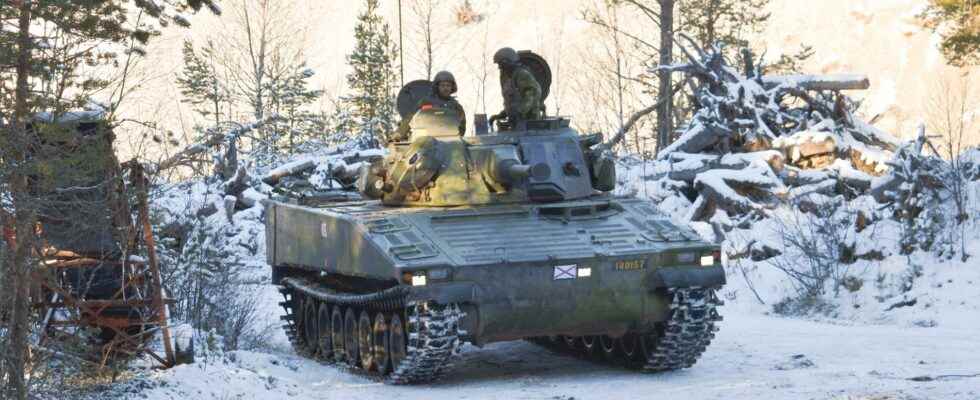Sweden’s defense will eventually need to be adapted to NATO’s defense planning for the Baltic Sea region.
– We have a defense force that you have very great respect for and benefit from, says Vice Admiral Jonas Haggren.
Our national defense remains, even in NATO, the first line of defense in the event of an attack on Sweden. Therefore, the decided rearmament will continue even with a NATO membership.
The big difference is that the defense will be part of NATO’s operational plans to defend the Baltic Sea region. The planning of what defense capabilities Sweden needs will also take place together with NATO and other NATO countries.
This means adaptations of the Swedish defense, but Jonas Haggren emphasizes that they will take place in dialogue.
– Nothing is in any way required from the beginning, that we should do this or that, he says.
Defend Gotland
NATO’s planning will largely be based on the resources the Armed Forces already have or have planned for.
However, the Liberals’ defense policy spokesman Allan Widman reckons that NATO will have a lot of views, for example on how strong the defense of Gotland needs to be.
– It is our single most strategic land area, he says.
Widman points out that Gotland is extremely important for the defense of other NATO countries, primarily the Baltics, but also Finland.
– NATO will of course have interests in our military geography, the geostrategic areas and Gotland are of course one, says Jonas Haggren.
What will also be new for Sweden is that the operational plans can assume that military support really comes from allies. This would mean, for example, that Sweden can strengthen its defense of the North Calotte when it can count on support from other NATO countries in the south.
– But it is very premature to start talking about it now, says Haggren.
Few cannons
Widman also believes that in the long run NATO will want Sweden to expand its ground forces to be able to better defend all parts of the country.
“Today we have twice as many fighter jets as howitzers in the army,” says Widman.
In the plan for rearmament that Sweden already has, the army will grow, among other things.
– There can of course be a possibility that it will be affected by the operational planning that takes place jointly with NATO, Haggren says.
– But there is still a long way to go before we are even there.
NATO is constantly reviewing its operational plans for different regions and scenarios.
The so-called defense planning is also an ongoing process, currently in four-year cycles. It is about ensuring that NATO countries have the military capabilities required to implement the operational plans.
National goals
At the moment, the ambitions and direction that will apply to NATO in the future are being drawn up at the political level. That work should be completed by the beginning of next year.
Subsequently, NATO’s military staffs produce a report on what defense capabilities the alliance needs as a whole to meet the politically determined ambitions.
Based on that report, each member state then gets its own capability it should be able to fulfill. The national goal is very concrete, it can for example be about how many battle planes, submarines or army brigades should be available.
For the Swedish part, it may take a few years before Sweden is imposed the first sharp national capabilities.
It is also decided which parts of the national defense are to be placed under NATO command, in case Article 5 of the NATO Treaty on collective defense needs to be applied. Norway has chosen to largely only keep the Home Guard under Norwegian command.
In the event of war in the Baltic Sea region, a large part of the Swedish operations would probably be controlled from NATO’s operations command center in Brunssum in the Netherlands.
Tasks in peace
Even in peacetime, new tasks can await the Swedish defense, for example that the air force is involved in patrolling the airspace of the Baltic states. Or that Sweden contributes to NATO’s rapid reaction force.
– These are absolutely realistic, probable alternatives, says Haggren.
Sweden may also participate in NATO’s multinational battle groups based in the Baltics.
If it becomes relevant, it will be about contracted soldiers, not conscripts, according to the Armed Forces. Conscripts, on the other hand, can already participate in NATO exercises today.
– The basis for them is to defend Sweden. There will be no major changes, says Haggren.
The Armed Forces sees no problem for Swedish units to cooperate with other NATO countries. The Navy, the Air Force and the Army already work closely with NATO and are considered to live up to NATO standards.
– It will be almost a seamless transition for them, says Haggren.
– The biggest changes (with NATO membership) will be more at the operational strategic level and not least at the political level.
